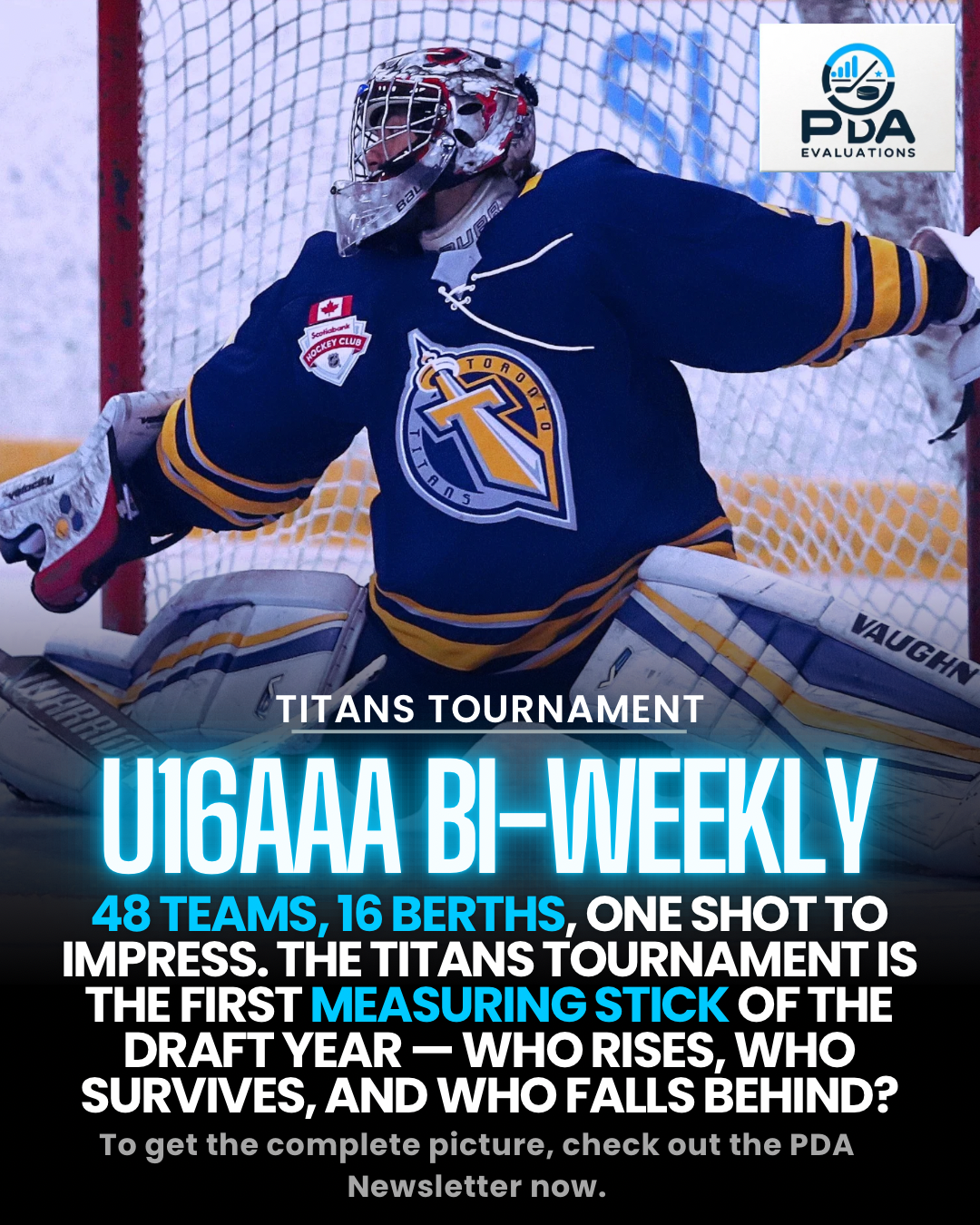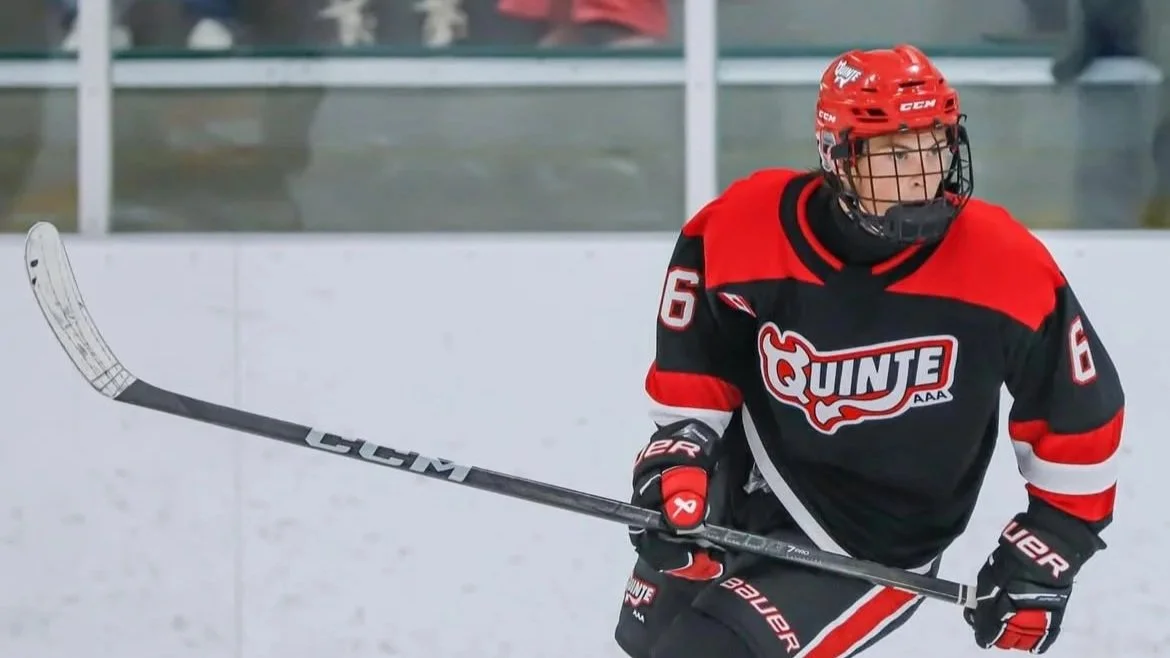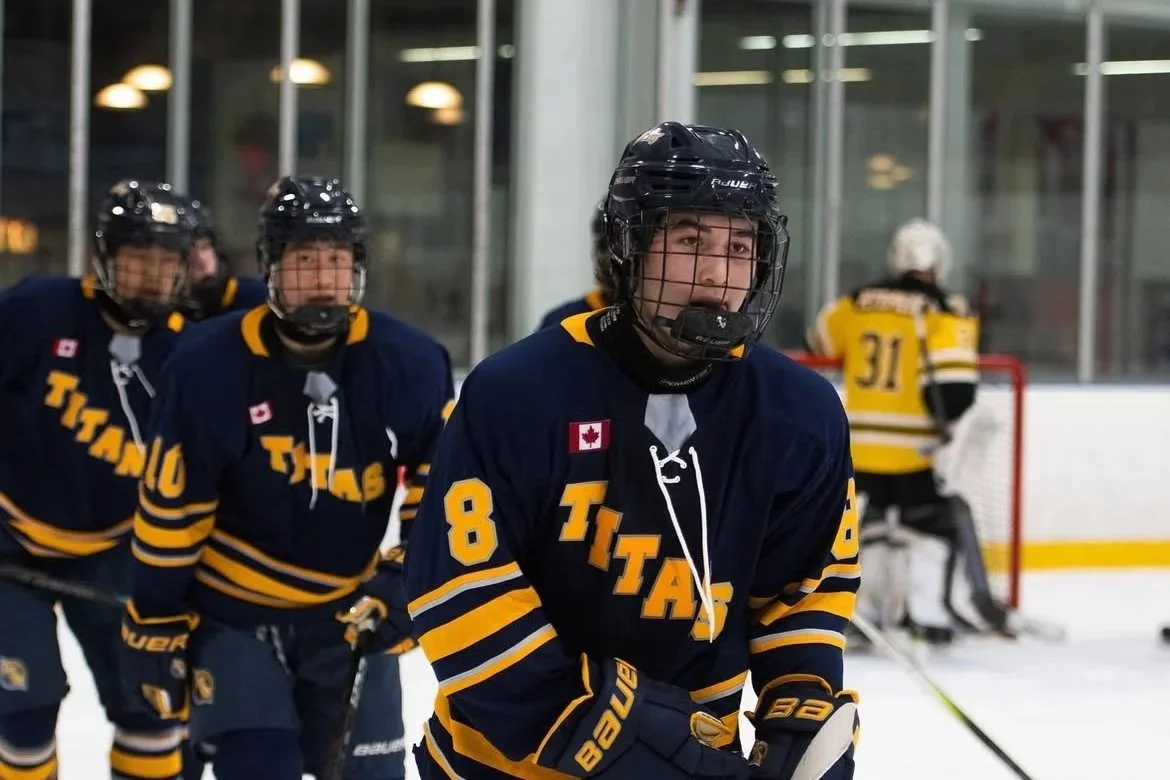The PDA Newsletter | Titans Tournament Preview
The First Impression Test
Which teams will seize the moment, and which will stumble at the starting line?
Every draft class has it’s first impression moment.
For the 2010-born group, it begins today at the Toronto Titans U16 Tournament, the long-awaited stage circled on calendars all summer.
After months of off-season training, team building, and anticipation, the curtain finally lifts.
Forty-eight teams arrive with high hopes, but the math is ruthless: only 16 will survive past the preliminary round.
With just four games to prove themselves, every mistake is magnified and every goal matters.
Win your group, and the path is clear. Slip up, and you’re at the mercy of the wildcard cut.
That’s what makes the Titans Tournament so much more than another early-season event.
It’s the moment where summer preparation meets real competition.
It’s the stage where scouts form first impressions, where parents see how their players handle the spotlight, and where teams test whether their chemistry holds when the pace ramps up.
For the 2010 class, this week isn’t just about surviving the grind, it’s about announcing who’s ready to lead the draft year.
Tournament Details
How To Advance:
Each group winner (8 total) books an automatic spot in the Sweet 16. The remaining 8 spots are wildcards, awarded to the best records across the entire tournament. A second-place finish isn’t guaranteed, and a third-place team can still sneak in if their group is strong enough. Goal differential and tiebreakers matter. Every period, every shift, and every goal counts.
With automatic berths and wildcard spots on the line, every group has a story to tell. Some pools feature heavyweights expected to cruise into the Sweet 16.
Others are complete toss-ups, where parity and pressure could turn every game into a must-win. A few have dark horses lurking, ready to spoil reputations before they’re even built.
That’s the beauty of the Titans, no two groups are the same, and no one is safe from the math.
Here’s how the eight divisions stack up as the first puck drops on the 2010 class’s biggest stage yet…
Group Breakdowns
Group 1 — JRC’s to Lose
The Toronto Jr. Canadiens headline as clear favorites and anything less than the automatic berth would be a shock. Barrie has the depth and talent to chase a wildcard, but the rest of the group faces a steep climb.
Group 2 — Sens and Chaos
The Mississauga Senators should control this group, but behind them it’s a scramble. Waxers, Oakville and Myers Automotive are close enough that one hot weekend could decide who sneaks through.
Group 3 — Majors in Control
The Markham Majors enter as firm favorites with the firepower to lock up the top spot. Niagara North, York Simcoe, Huron-Perth, and North York will be left fighting over slim wildcard margins.
Group 4 — Kings and Darkhorse
The Vaughan Kings have the pedigree to pace this group, but Brantford is a true dark horse. Ottawa Jr. 67’s bring balance, Ajax-Pickering a brand new roster and the Syracuse Nationals add intrigue as a U.S. entry, leaving Sudbury under pressure to keep up.
Group 5 — Flyers or Quinte
This group looks like a two-team race between Don Mills and Quinte, with both likely bound for the Sweet 16. The Toronto Red Wings are the X-Factor, while Ottawa Valley and Sarnia-Lambton will likely have to depend on timely upsets to stay alive.
Group 6 — Marlboros and Mayhem
The Toronto Marlboros are one of the safest bets to advance. Behind them, the Toronto Titans, Central Ontario, Kitchener, and Halton all bring roster turnover, meaning one could surprise, or none could survive.
Group 7 — Parity Prevails Here
The Credit River Capitals carry a slight edge in this group, but the Rebels, Reps, and Petes are all capable and hungry to take the top spot. Expect parity, close games, and at least one wildcard emerging from the chaos.
Group 8 — Wide Open Race
No Canadian team stands out as a clear-cut favourite here, with Hamilton, Elgin-Middlesex, and North Shore all on even footing to begin the year. That opens the door for Compuware, the second U.S. entry, to make a deep run if they can find their footing early. The Toronto Nationals could likely be the team to beat in Group 8.
From Round Robin to Sweet 16
Once the group stage ends, the tournament takes on a different energy.
The Sweet 16 isn’t just more hockey, it’s elimination hockey, where every shift can swing the tournament.
Depth charts shrink as coaches lean heavily on their best players. Stars are expected to deliver, and supporting cast members are tested to see if they can rise with the stakes.
For bubble teams, simply reaching this stage is validation, proof they can compete at a high level. For true contenders, it’s where reputations begin to harden.
Games get faster, mistakes grow louder, and every powerplay, penalty kill, or defensive breakdown carries consequences.
The quarterfinals and semifinals quickly separate teams built for a run from those running out of gas.
And by the final, the tournament feels less like September and more like spring playoff hockey, with one champion emerging as the early standard for the 2010 class.
The Development Lens
First impressions matter, but they don’t define a season.
The Titans Tournament will put players on the scouting radar, but staying there requires more than one hot weekend.
Those who truly separate themselves are those who take the spark from this week and turn it into fuel, adapting to tougher competition, evolving their habits, and responding to pressure again and again as the season unfolds.
The Titans are the opening chapter, not the full story.
A strong performance can set momentum, but the real verdict is delivered over months of consistent, resilient, and sustained growth. That’s where players prove whether they’re ready to rise above the pack.
Keep up with PDA this week as we follow the sparks and the players capable of setting them ablaze.
Talon Mills
Up next in the PDA Newsletter
Next up this Thursday in the PDA Newsletter: The Martin St. Louis Case Study
He was overlooked at every level, too small, too light, too easy to pass on.
But Martin St. Louis didn’t wait for permission; he built a game so sharp, so relentless, that hockey had no choice but to take notice.
This is the story of how doubt became his fuel, and how he rewrote the rules of what greatness could look like.






